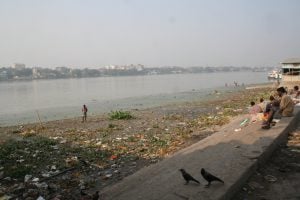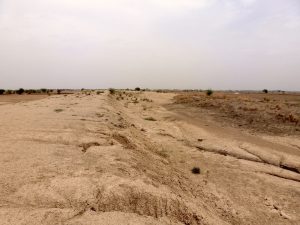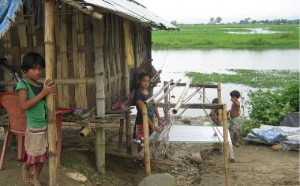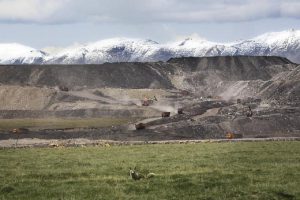Adequate, safe and reliable drinking water supply is essential for the sustainable development of major cities, and it is arguably the most important public health service provided by governments. The World Health Organization concluded that every US$1 invested in water would give an economic return of between US$3 and US$34. Even at the low end of the spectrum, a US$3 return on investment should be an easy financial decision, and yet 1 out of 10 people around the world still live without piped water at home and millions more turn on their taps to find intermittent service and poor quality.
Karachi’s drinking water quality is not wholesome, due to microbial contamination that results from aging water supply lines crossed with leaking sewer lines. Karachi’s water also faces chemical contamination of arsenic, chromium, copper, mercury, and more, which primarily occurs when untreated industrial wastewater is discharged into surface raw water sources; such contaminants can even leach from the water pipes themselves. Karachi and Flint, Michigan, USA share a common concern over lead poisoning.
See: Dirty water takes heavy death toll in Sindh, Pakistan
What happened in Flint is no tragic accident; it is the very definition of a man-made water crisis resulting from the prioritization of finances over public health and the subjugation of democracy in a city that is majority African American and Latino. An “emergency manager” appointed by the governor of Michigan made the decision to switch supply from the Detroit water system to the Flint River. Based on budget estimates, he reasoned that spending US$5 million for an additional two years sourcing from the Detroit system before a new pipeline could be finished was simply too costly. As a result, the state is now grappling with how it will pay upwards of US$1.5 billion to make the mandatory infrastructure repairs.
The residents of Flint are of course paying the greatest burden, some of whom will face a lifetime of healthcare costs from lead poisoning. Stories continue to emerge of once straight-A students now struggling to concentrate and maintain average grades. Others tell of skin rash, headaches, and even miscarriage.
Adding to the sense of outrage, Governor Snyder’s administration dismissed complaints about the water for more than a year while sending bottled water to their local staff.
The use of lead is common in industries around Karachi. Lead is used in cable sheathing, lead acid batteries, pigments, solders, alloys, plastic stabilizers and rust inhibitors. Lead compounds are used in plumbing fittings, and as solder in water distribution systems. Lead pipes are used in water distribution systems. Tetraethyl and tetramethyl lead are used as antiknock compounds in petrol.
A local study that examined lead levels in tap water and the groundwater in Karachi, showed that almost all samples had lead levels that exceeded the World Heath Organization’s drinking guideline value of 10 micrograms per liter (Guidelines for Drinking-Water Quality, 4th ed., 2011). There is significant association of blood lead levels in children with consumption of drinking water with elevated levels of lead. The United States Centers for Disease Control and Prevention usees a reference level of 5 micrograms per deciliter to identify children (1 – 5 years) with high blood lead levels.
The United Nations General Assembly, through Resolution 64/292 of July 28, 2010, explicitly recognized the human right to water and sanitation, acknowledging that clean drinking water and sanitation are essential to the realization of all human rights. The resolution calls upon states and international organizations to provide financial resources, capacity-building and technology transfer to help countries, in particular developing countries, in their mandate to provide safe, clean, accessible and affordable drinking water and sanitation for all.
Earlier, in November 2002, the UN Committee on Economic, Social and Cultural Rights adopted General Comment No. 15 on the right to water, which says, under Article I.1, that the human right to water is indispensable for leading a life in human dignity. It is a prerequisite for the realization of other human rights. It also highlighted the right to water as the right of everyone to sufficient, safe, acceptable and physically accessible and affordable water for personal and domestic uses.
Despite the fact that climate change is putting increasing pressure on water resources, creating more turbulent weather patterns and causing draught, there is enough water to meet everyone’s human rights. Still absent is the political will to prioritize clean water. Civil society must push their political representatives to think beyond the next election cycle because water systems cannot be funded in a single year’s budget. From Flint to Karachi, governments at all levels must engage in the deep planning required to fund water infrastructure for generations to come.
Flint’s story is a case of environmental racism at its worst, where money was prioritized over human rights and democracy. The only possible good that could come from this tragedy is if Karachi and other global municipalities are spurred to invest in water infrastructure because by health and economic measurements, prevention costs far less than treatment.
![<p>Flint, Michigan, has been in the news due to lead pollution in its water supply [image by Michigan Municipal League]</p>](https://dialogue.earth/content/uploads/2016/08/6109589699_65bc946cb4_o-300x199.jpg)







